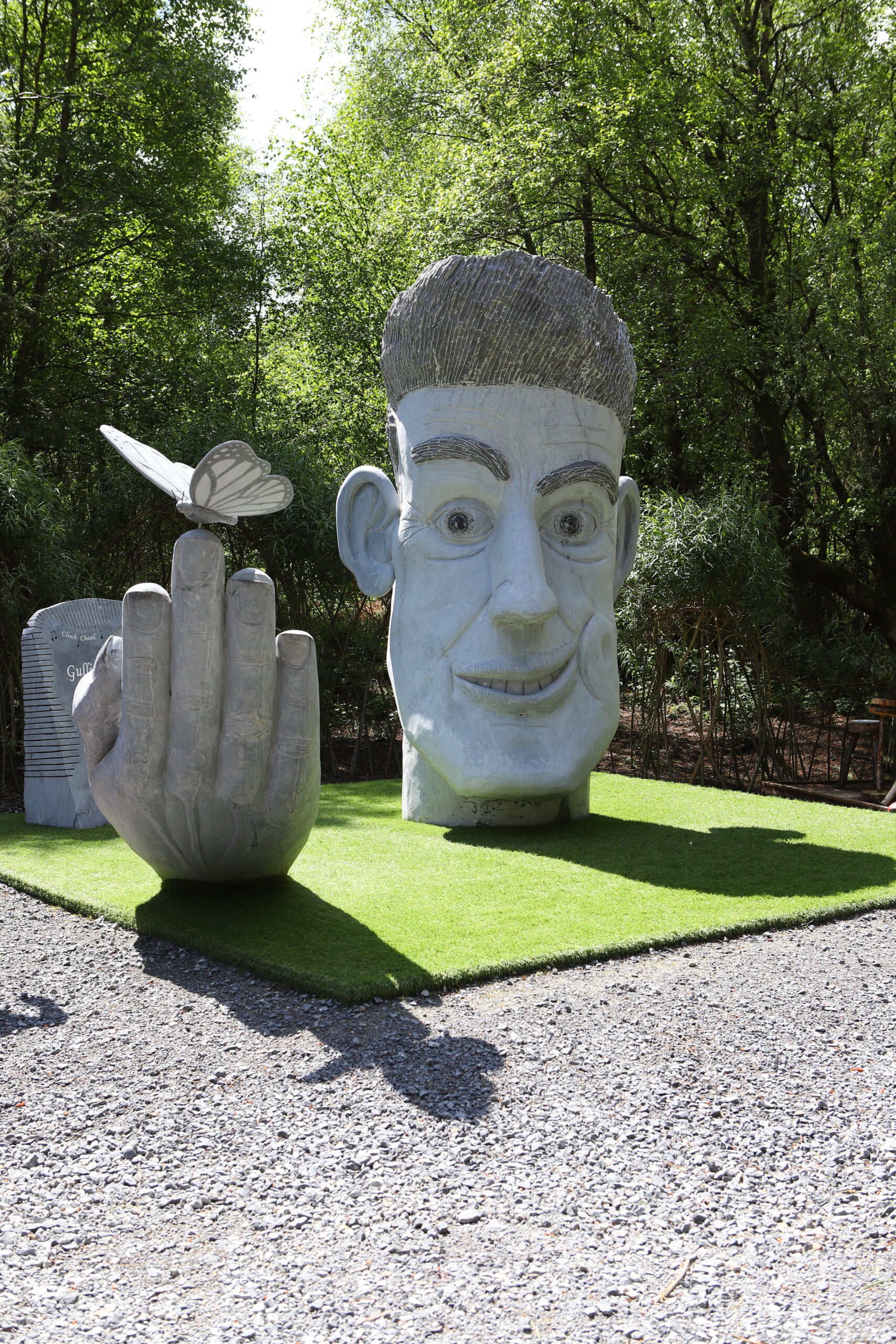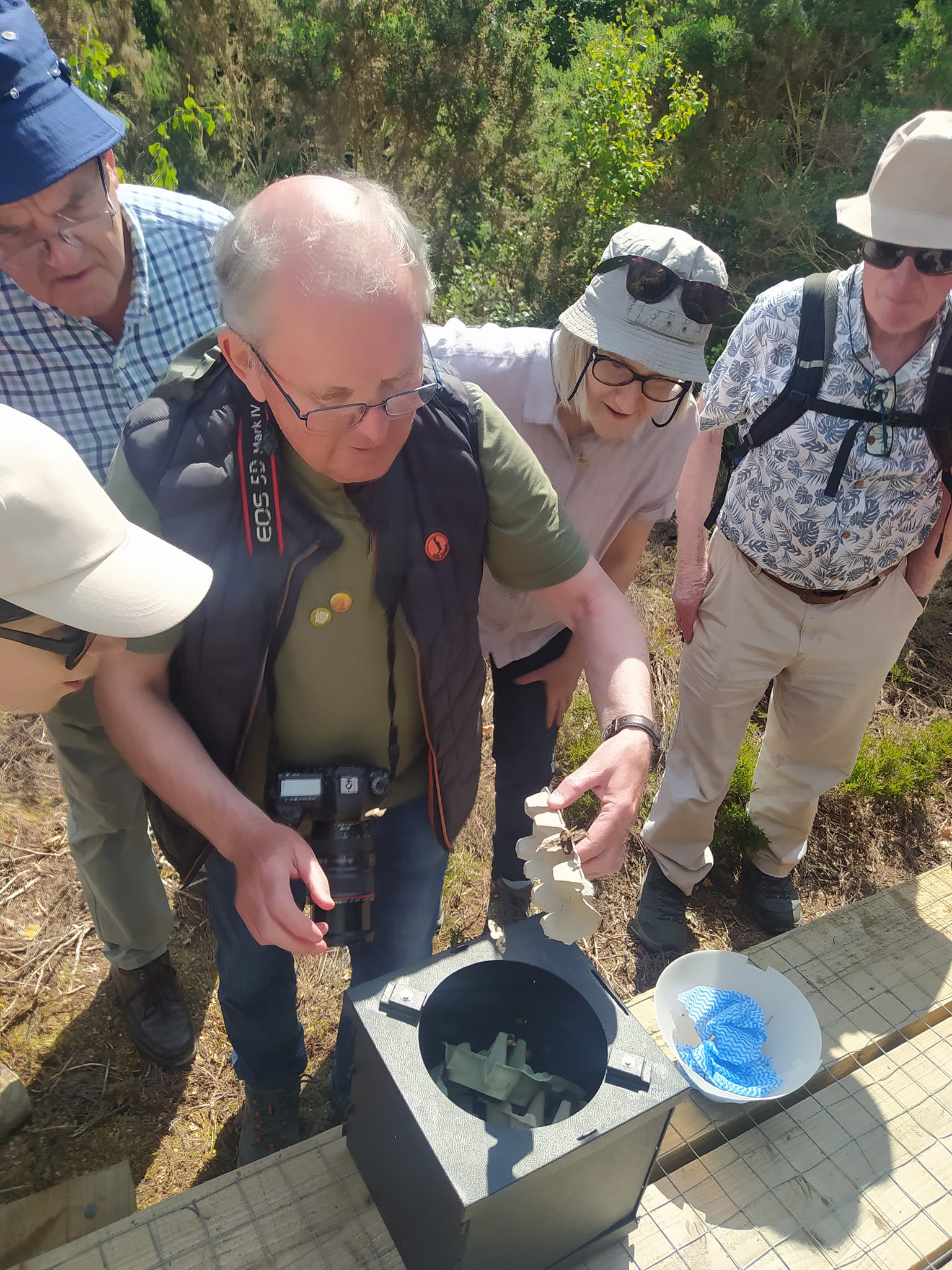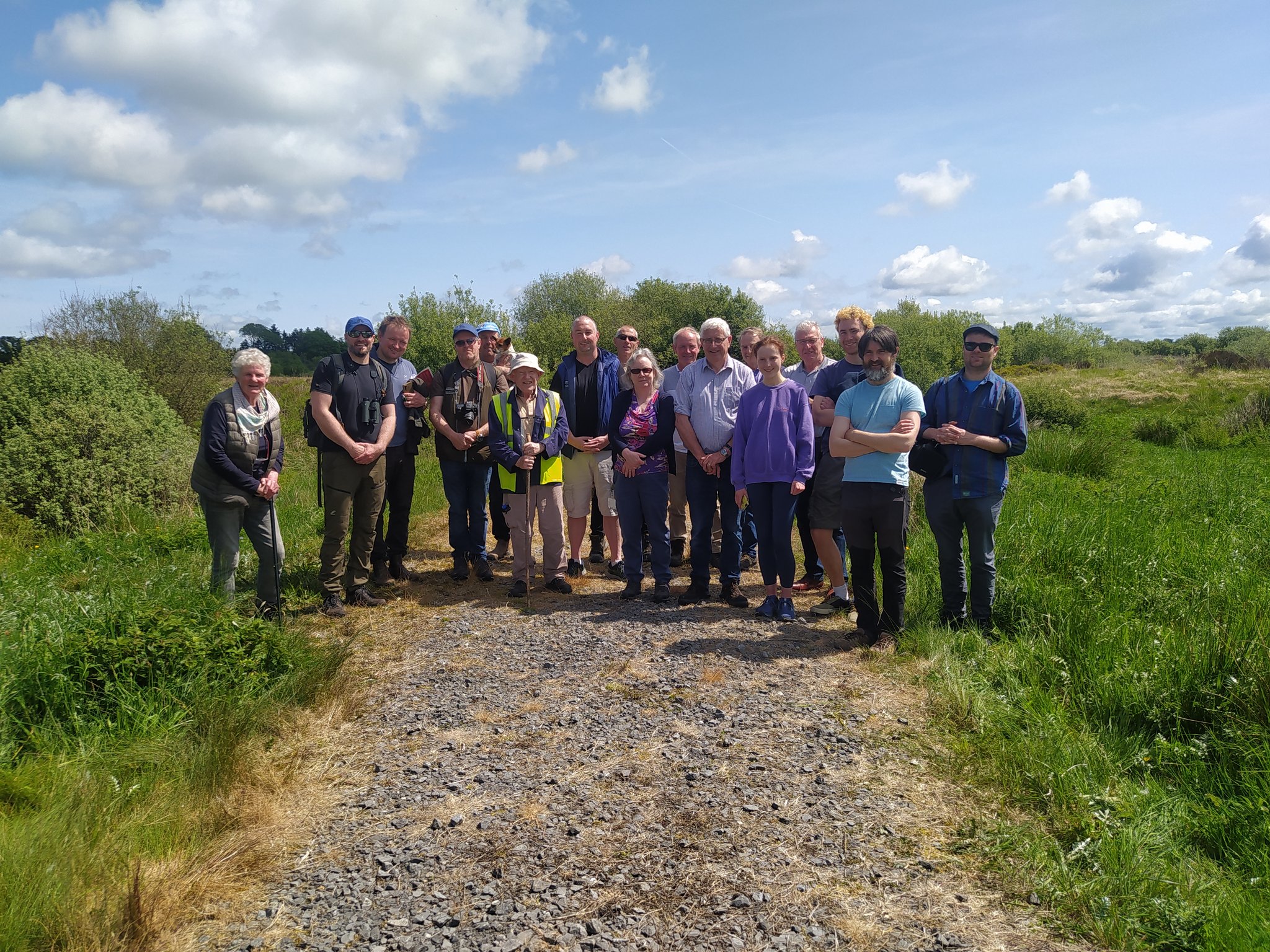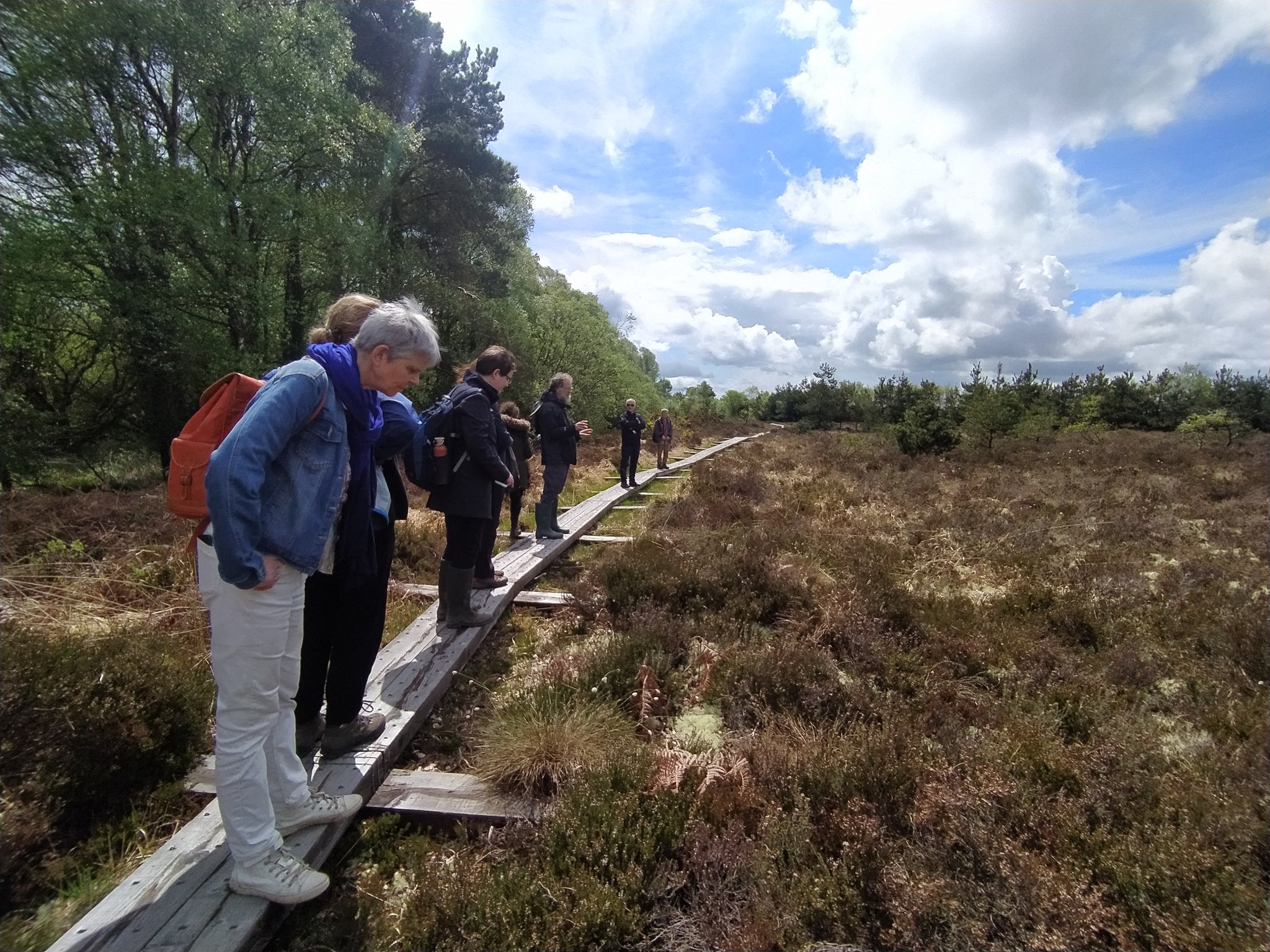Peatlands are valuable ecosystems that provide numerous benefits, including carbon storage, water regulation, and biodiversity preservation. However, these fragile environments are under threat from human activities. Community collaboration is emerging as a crucial factor in the successful restoration and conservation of peatlands. Here we explore the significance of community involvement in peatland projects based on four study visits conducted as part of the Connecting Communities with Peatlands project.
What is a study visit?
Study visits, similar to field trips, serve as a platform for peer-to-peer knowledge exchange and observation of best practices. These visits aim to foster connections between different community-led peatland projects and stakeholders while promoting learning and sharing of knowledge and experiences.
Scohaboy Bog and Sopwell Woodlands SAC
Scohaboy Bog, located in Sopwell near Cloughjordan, Co. Tipperary, is a Special Area of Conservation (SAC) managed by the National Parks and Wildlife Service (NPWS), Coillte, and private landowners. The Cloughjordan Community Development Association (CCDA) played a crucial role in the restoration of Scohaboy Bog, working alongside the initial public information meetings and engaging with the 60 landowners who own sections of the bog. The community’s support and permission were vital in making the restoration and conservation of the bog a reality. Furthermore, the CCDA’s involvement led to the development of trails, walking infrastructure, and educational signage, benefiting both the environment and the local community.
Cloonlarge Bog Loop, Lough Ree SAC
Cloonlarge Bog, situated in Kilteevan, Co. Roscommon, is part of Lough Ree SAC. Kilteevan Tidy Towns (KTT) took the initiative to change the perception of the bog from wasteland to oasis through the development of Cloonlarge Bog Loop. By reopening cul-de-sac roads and creating trails, KTT successfully engaged the community and raised awareness about the environment and bog biodiversity. The looped walks not only provide a safe space for recreational activities but also foster a sense of community and well-being among locals. KTT’s community-led project has effectively showcased the importance of protecting the environment and its benefits.
 Carrowbehy/Caher Bog
Carrowbehy/Caher Bog
Carrowbehy/Caher Bog, located near Castlerea, Co. Roscommon, is a SAC managed by the NPWS. The Gorthaganny Community Development Committee (GCDC) has been instrumental in enhancing the cultural, heritage, and natural resources of the area. GCDC collaborated with various organizations, including the EU LIFE Living Bog Project, to restore and promote the bog. The Living Bog Project’s impact on the community was significant, attracting visitors and raising awareness about the importance of raised bogs. GCDC continues to engage with the bog, focusing on recreational facilities and biodiversity awareness.
Cloncrow Bog
Cloncrow Bog, situated near Tyrellspass, Co. Westmeath, is a Natural Heritage Area managed by both the NPWS and private landowners. ETHOS (Everything Tyrellspass Has, On Show) has been actively involved in the development of the Cloncrow Bog and Village Trail, the Care-Peat project, and educational initiatives in the area. The recently opened bog and village trail, showcases the unique beauty of Cloncrow Bog and the historic town of Tyrellspass. Community-led efforts, in collaboration with private landowners, have been pivotal in preserving this valuable natural resource.
The Importance of Community Collaboration
The study visits highlighted the indispensable role of community involvement in peatland projects. Communities provide continuity beyond the involvement of contractors and project managers, ensuring the long-term monitoring and success of restoration and conservation efforts. Community support and ownership foster a sense of pride and responsibility, leading to sustained engagement and commitment to nature conservation and restoration.
Here are some key reasons why community collaboration is essential:
 1. Local Knowledge and Expertise: Communities living near peatlands possess valuable local knowledge and expertise about the area. They have a deep understanding of the ecosystem, its history, and its significance to their community. By involving the community in peatland projects, this knowledge can be harnessed, ensuring that restoration and conservation efforts are well-informed and tailored to the specific needs of the ecosystem and the people who depend on it.
1. Local Knowledge and Expertise: Communities living near peatlands possess valuable local knowledge and expertise about the area. They have a deep understanding of the ecosystem, its history, and its significance to their community. By involving the community in peatland projects, this knowledge can be harnessed, ensuring that restoration and conservation efforts are well-informed and tailored to the specific needs of the ecosystem and the people who depend on it.
2. Stakeholder Engagement and Support: Peatland projects often require cooperation and support from various stakeholders, including landowners, local authorities, businesses, and residents. Communities act as a bridge between these stakeholders, facilitating dialogue, building relationships, and gaining support for the projects. Their involvement helps to foster a sense of collective responsibility and ensures that diverse perspectives and interests are considered in decision-making processes.
3. Social and Economic Benefits: Peatland restoration and conservation projects can bring significant social and economic benefits to local communities. By engaging in these initiatives, communities can create opportunities for local employment, tourism, and sustainable economic development. Additionally, the presence of well-managed peatlands can enhance the quality of life for residents, providing recreational spaces, improved air and water quality, and habitat for wildlife.
4. Education and Awareness: Community involvement in peatland projects offers a unique platform for environmental education and raising awareness about the importance of peatlands. By actively participating in restoration activities, community members become ambassadors for the cause, sharing their experiences and knowledge with others. This helps to create a culture of environmental stewardship, where the value of peatlands is recognized and respected by future generations.
5. Long-term Sustainability: Peatland restoration and conservation require ongoing monitoring and maintenance to ensure their long-term sustainability. Communities play a crucial role in this regard, as they have a vested interest in the health and well-being of their local peatlands. Their continued involvement can help establish monitoring programs, detect any threats or changes in the ecosystem, and take necessary actions to address them promptly.
Community collaboration is vital for the success of peatland restoration and conservation projects in Ireland and around the world. By involving local communities, these initiatives can benefit from local knowledge, gain support from various stakeholders, and bring about social, economic, and environmental advantages. The study visits conducted as part of the Connecting Communities with Peatland project have demonstrated the transformative power of community involvement, reinforcing the importance of continued collaboration for the preservation of peatlands and the well-being of the communities that depend on them.
.


